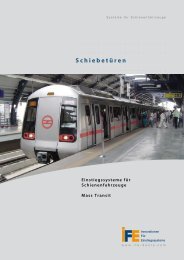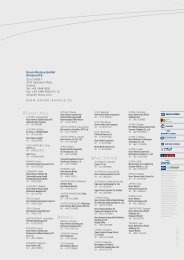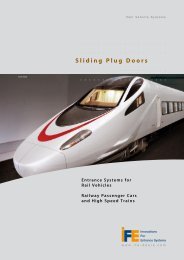Annual Report 2010 - Knorr-Bremse AG.
Annual Report 2010 - Knorr-Bremse AG.
Annual Report 2010 - Knorr-Bremse AG.
You also want an ePaper? Increase the reach of your titles
YUMPU automatically turns print PDFs into web optimized ePapers that Google loves.
14<br />
The State and Development<br />
of <strong>Knorr</strong>-<strong>Bremse</strong> <strong>AG</strong> and the<br />
<strong>Knorr</strong>-<strong>Bremse</strong> Group<br />
An overview of the<br />
<strong>Knorr</strong>-<strong>Bremse</strong> Group<br />
General economic<br />
developments<br />
The <strong>Knorr</strong>-<strong>Bremse</strong> Group is the world‘s leading manufacturer<br />
of braking systems for rail and commercial vehicles.<br />
For more than 100 years now the company has pioneered<br />
the development, production, marketing and servicing of<br />
state-of-the-art braking systems. Other lines of business in<br />
the rail vehicle systems sector include automatic, electropneumatic<br />
or electric door systems, air conditioning systems,<br />
control components and windscreen wiper systems,<br />
as well as platform screen doors. In the commercial vehicle<br />
systems sector, the product range includes complete braking<br />
systems with driver assistance systems, as well as torsional<br />
vibration dampers and powertrain-related solutions<br />
such as the Pneumatic Booster System (PBS) and transmission<br />
control systems for enhanced energy efficiency and<br />
fuel economy.<br />
The structure of the <strong>Knorr</strong>-<strong>Bremse</strong> Group is based on the<br />
regions Europe, North America and South America, and<br />
Asia/Australia, and the development of the Group is geared<br />
to meeting the specific requirements of the markets and<br />
customers in these regions.<br />
This regional organizational structure is designed to offer<br />
globally active customers uniform technical platforms<br />
worldwide, while at the same time taking specific local<br />
needs into account. It also ensures that customers who operate<br />
on a regional basis are supplied with globally proven<br />
systems and components.<br />
The negative economic background conditions caused by<br />
the global economic and financial crisis that dominated<br />
2008 and 2009 improved in <strong>2010</strong> and a relatively robust if<br />
regionally different real-market recovery set in.<br />
The emerging economies of Asia continued to drive the<br />
recovery. The relative contributions to growth of the<br />
emerging and industrialized nations showed the same<br />
marked divergent progression as they had during the crisis.<br />
In <strong>2010</strong>, average growth among the emerging nations<br />
was 7.1%, while the industrialized nations posted just 3.0%<br />
growth on average. Global figures are expected to show<br />
overall economic growth of around 5.0% (2009: minus<br />
0.6%).<br />
As the global markets recovered, the economic performance<br />
of the Eurozone also stabilized in <strong>2010</strong>. Following a<br />
4.1% decline in 2009, economic output rose 1.8% in <strong>2010</strong>.<br />
With GDP growth of 3.6% (2008: minus 4.7%) which was<br />
above average for the region, Germany made a substantial<br />
contribution to ensuring greater stability. As an exportoriented<br />
economy, Germany was initially harder hit by the<br />
collapse of global trade, but then benefitted more strongly<br />
from its recovery in <strong>2010</strong> than other Eurozone countries.<br />
With commodity prices firming up, Russia too with its<br />
marked dependency on energy exports saw GDP rise 3.7%<br />
(2009: minus 7.9%).


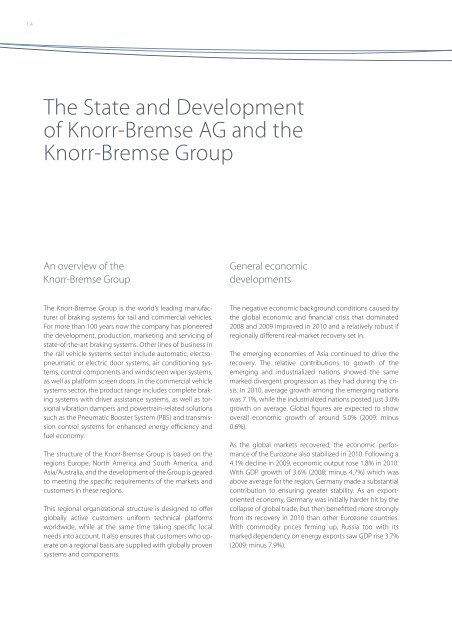

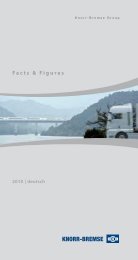

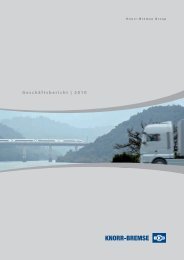
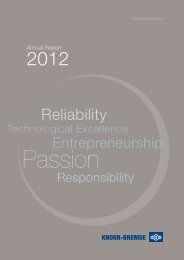
![Geschäftsbericht 2012 [PDF, 13 MB] - Zelisko](https://img.yumpu.com/22524926/1/184x260/geschaftsbericht-2012-pdf-13-mb-zelisko.jpg?quality=85)

